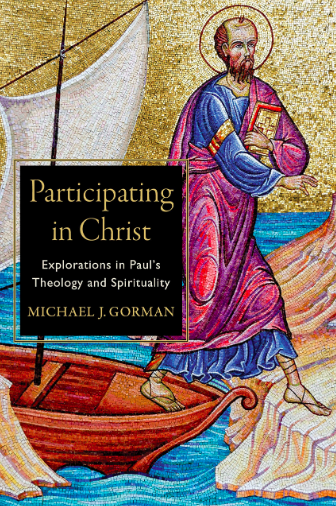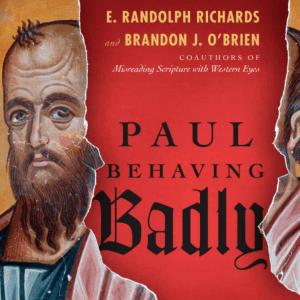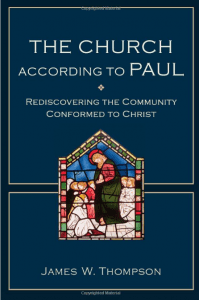 A pugilist is a fighter, and the apostle Paul was a battler. But he perceived a different battle, he was empowered for the battle in a new way, and he had a different strategy for his battling.
A pugilist is a fighter, and the apostle Paul was a battler. But he perceived a different battle, he was empowered for the battle in a new way, and he had a different strategy for his battling.
These are the contentions of Rodney Reeves in his book Spirituality according to Paul: Imitating the Apostle of Christ. I want to look at each, but notice these words of Reeves: “… sickness and death do not scare us anymore because we’ve already seen the end of the world” (205).
Do you have a cosmology that includes the powers, demons, the supernatural? Does your gospel reveal victory over the powers?
Whether or not you believe today in demons and cosmic powers and forces, Paul did — and so did his churches, and such a cosmology was deep in the worldview at Ephesus where the goddess Diana was the answer. They wanted security and Paul was telling them that their way of getting security was like riding a stationary bike: you get nowhere.
So when Paul preached there — you can read about it in Acts 19 — the Ephesian converts got all excited and burned amulets and began to tear down the idolatries and cosmology at work in Ephesus. Which got Paul in trouble with the Ephesian authorities, from whom he escaped. But the whole letter to the Ephesians is infused with this cosmology and that such a worldview has been deconstructed. Here’s a really good verse that expresses Paul’s battle warriors:
For our struggle is not against flesh and blood, but against the rulers, against the authorities, against the powers of this dark world and against the spiritual forces of evil in the heavenly realms (Eph 6:12).
Paul’s strategy is also gospel-drenched and it expresses itself with a new way of living and this expresses itself in two ways. It begins with seeing new attire.
13 Therefore put on the full armor of God, so that when the day of evil comes, you may be able to stand your ground, and after you have done everything, to stand. 14 Stand firm then, with the belt of truth buckled around your waist, with the breastplate of righteousness in place, 15 and with your feet fitted with the readiness that comes from the gospel of peace. 16 In addition to all this, take up the shield of faith, with which you can extinguish all the flaming arrows of the evil one. 17 Take the helmet of salvation and the sword of the Spirit, which is the word of God.
In essence, the conversion of the imagination was for the Ephesians to see themselves attired — dressed up — in gospel clothing: truth, righteousness, gospel of peace, faith, salvation, Spirit, and the word of God. Each of these could be developed, but that can’t be done here. The way to convert the imagination is to develop a new identity of seeing ourselves protected by Christ himself and what he provides.
How is this done? The second strategy for Paul is to pray. Prayer is an act of defiance against the powers that be and against the worldview. Reeves points us to a number of passages: 1 Cor 7:5; Eph 3:8-21; Phil 1:3-5; Eph 6:18-20. Prayer converts the imagination from fear of the cosmic powers to confidence in the power of the resurrection. Prayer doesn’t end suffering or death, but instead provides a way of standing firm — notice how often Paul focuses on learning to stand our ground. Here it is:
Put on the full armor of God, so that you can take your stand against the devil’s schemes.











